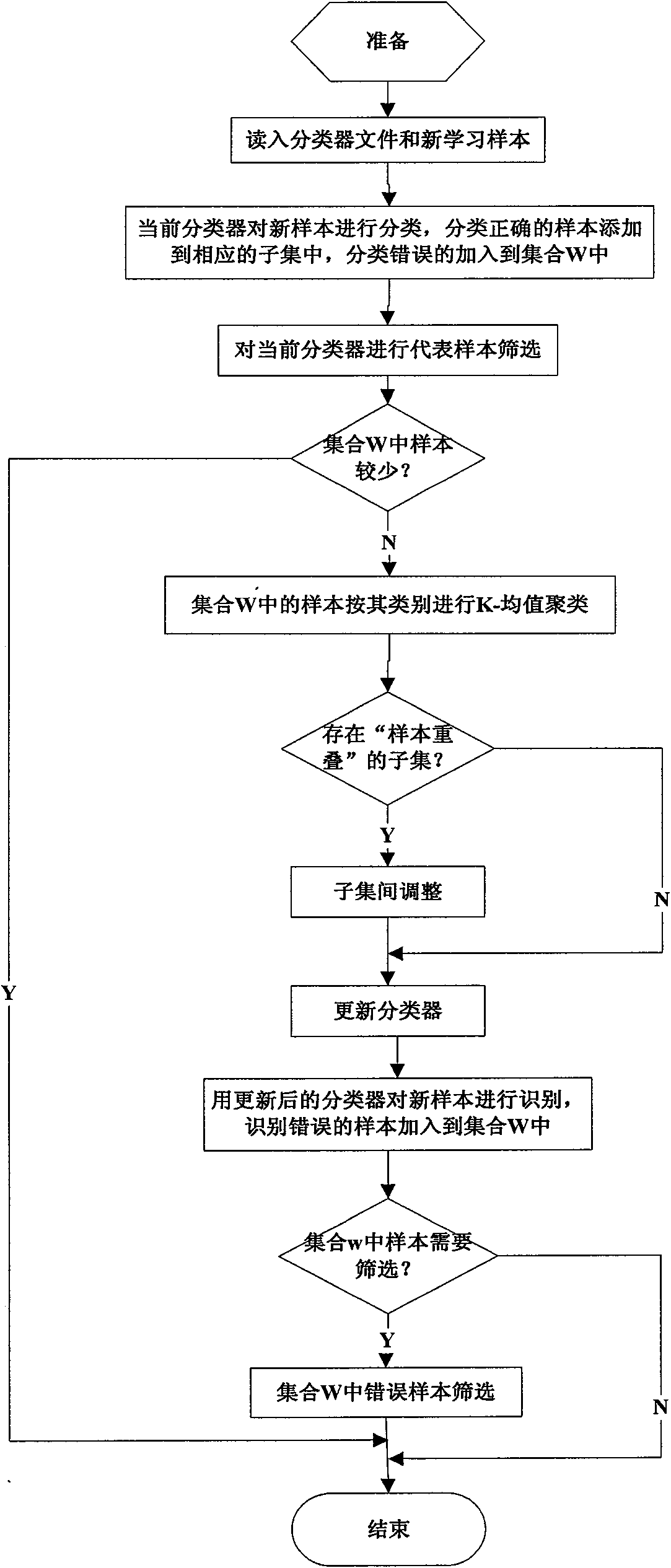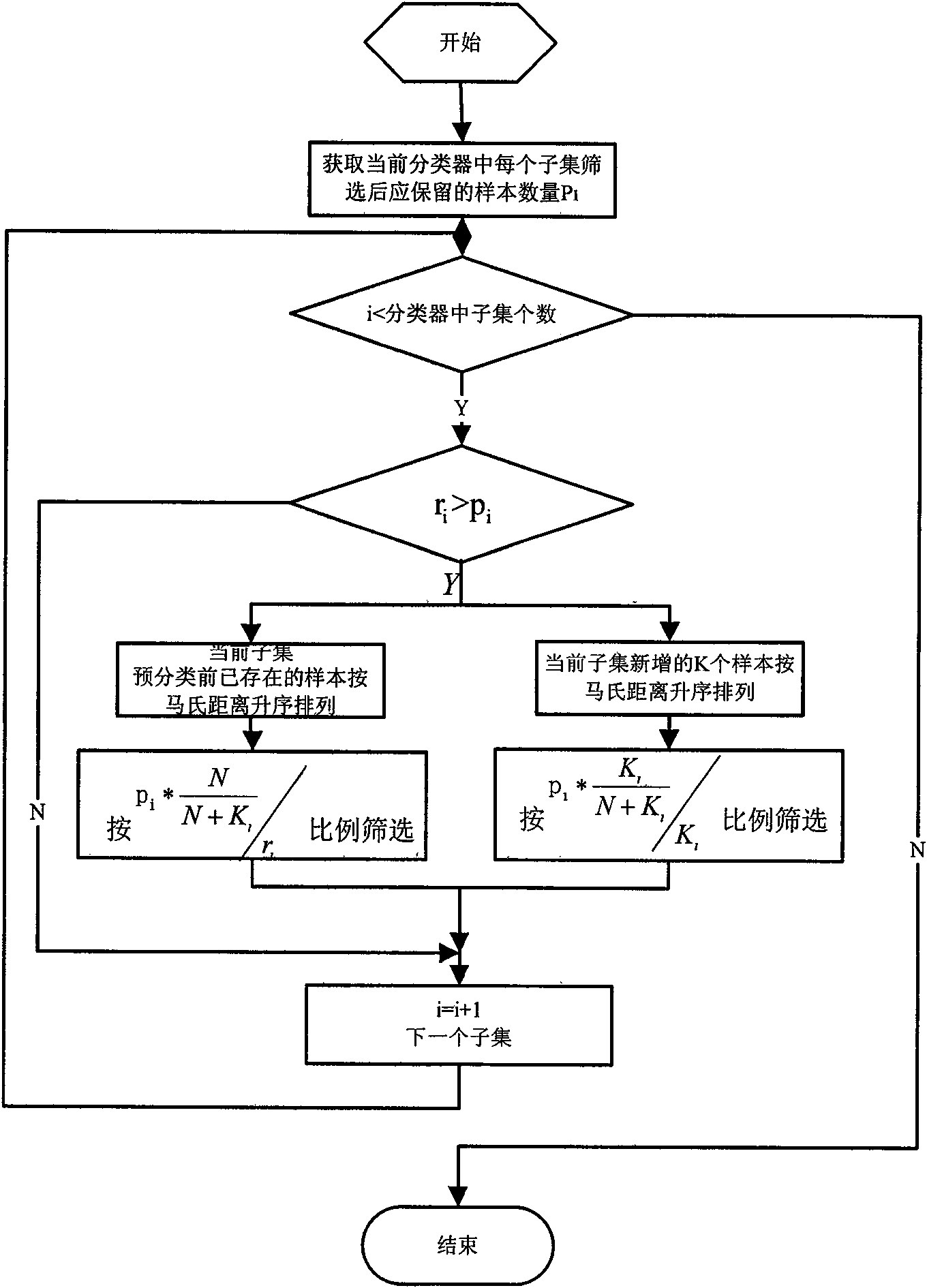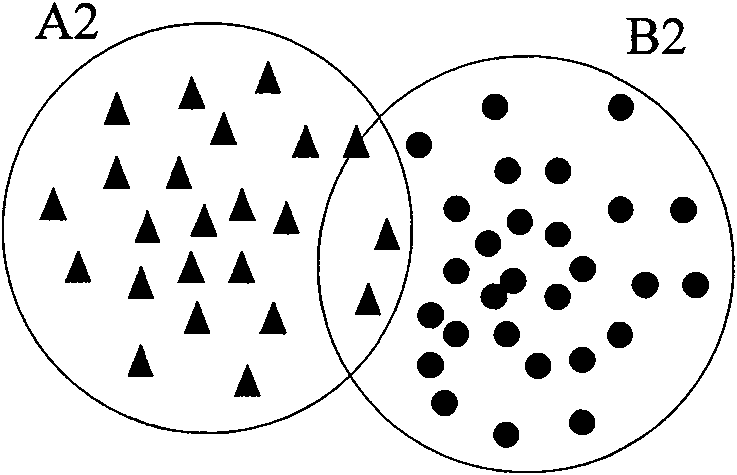Increment study classification method under limited storage resources
A technology of incremental learning and classification methods, applied in the field of incremental learning classification, can solve the problems of occupying storage space, poor classification performance, and low classification efficiency
- Summary
- Abstract
- Description
- Claims
- Application Information
AI Technical Summary
Problems solved by technology
Method used
Image
Examples
Embodiment Construction
[0025] The classifier adopted in the present invention is a minimum distance classifier, and Mahalanobis distance, Euclidean distance and the like can be selected. figure 1 It is a schematic diagram of an embodiment of the present invention, and the embodiment uses the Mahalanobis distance as a classification criterion.
[0026] 1. Obtain all current new samples and pre-classify them with the current classifier:
[0027] Calculate the Mahalanobis distance between the new sample t and each subset in the current classifier, find the subset S corresponding to the minimum Mahalanobis distance, and judge whether the category of the subset S is the same as the known category number of the new sample t, if they are the same, Then add the new sample t directly to the subset S, and update the number of new sample records k=k+1 in the subset S; if not, add the new sample t to the set W.
[0028] Mahalanobis distance between new sample t and subset S d = ...
PUM
 Login to View More
Login to View More Abstract
Description
Claims
Application Information
 Login to View More
Login to View More - R&D
- Intellectual Property
- Life Sciences
- Materials
- Tech Scout
- Unparalleled Data Quality
- Higher Quality Content
- 60% Fewer Hallucinations
Browse by: Latest US Patents, China's latest patents, Technical Efficacy Thesaurus, Application Domain, Technology Topic, Popular Technical Reports.
© 2025 PatSnap. All rights reserved.Legal|Privacy policy|Modern Slavery Act Transparency Statement|Sitemap|About US| Contact US: help@patsnap.com



